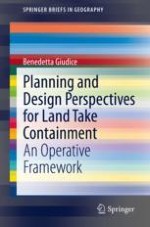2021 | OriginalPaper | Buchkapitel
4. Approaches to Green Infrastructure and Ecological Preservation: Two Case Studies
verfasst von : Benedetta Giudice
Erschienen in: Planning and Design Perspectives for Land Take Containment
Aktivieren Sie unsere intelligente Suche, um passende Fachinhalte oder Patente zu finden.
Wählen Sie Textabschnitte aus um mit Künstlicher Intelligenz passenden Patente zu finden. powered by
Markieren Sie Textabschnitte, um KI-gestützt weitere passende Inhalte zu finden. powered by
